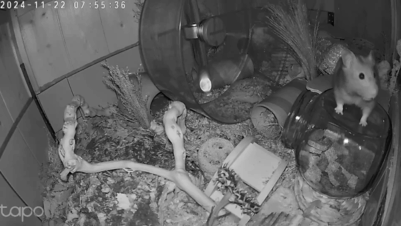
A survey of dog guardians conducted in 2016 found that 77.8 percent of dogs were aware they were going to the veterinary clinic, with 52.9 percent showing signs of stress as soon as they arrived at the clinic (Mariti et al., 2016). Further, using a combination of observations and owner interviews, Döring et al. (2009) reported that 78.5 percent of dogs were fearful in the veterinary context.
Fearful or anxious patients can show a number of undesirable behaviours including avoidance behaviours, hyperactive behaviours or aggression. These behaviours can make them challenging to handle and treat, and as a result, treatment may be delayed or avoided altogether. Further, these patients often take up more staff time, can pose a safety risk to staff and can be a source of stress for veterinary staff. It is therefore important that veterinary practices consider their approaches to these patients. Previous articles have explored approaches to preventing behaviour problems at the veterinary clinic from emerging, for example through cooperative care approaches. Here we address ways that veterinary professionals can help patients with existing fears or anxiety, with a focus on veterinary-led training clinics for fearful or anxious dogs.
Setting up a veterinary-led training clinic
Veterinary-led training clinics can be particularly beneficial as an early intervention for patients showing signs of mild anxiety in the veterinary context to prevent these anxieties from further developing into more established fears
Veterinary-led training clinics can be particularly beneficial as an early intervention for patients showing signs of mild anxiety in the veterinary context to prevent these anxieties from further developing into more established fears. Early recognition and intervention can help with dogs showing generalised anxiety about all aspects of veterinary visits; dogs who are worried about being handled, restrained or examined; and dogs who are worried about specific procedures, for example injections, nail clipping or having their ears examined. Veterinary practices wishing to run training clinics should consider where and when to run the clinics, what to include within the training sessions and also how to progress from training sessions to “real-life” situations.
The where, when and how
Ideally, clinics should take place somewhere that the dog and their owner can access without having to go through the rest of the clinic or into the waiting room, as this may be a stressor for some dogs. If possible, a space in which the dog hasn’t already had a negative experience should be used. There will need to be enough space to allow the dog to put distance between themselves and the member of staff, but a big open space should be avoided as this will likely result in the dog feeling very vulnerable. Considerations should also be taken about how you can provide barriers that allow the dog to hide or avoid eye contact if they feel worried. Plan your training clinics for times when the clinic is quieter – this will reduce the stressors for the dog and ensure your staff have the time and headspace to run the sessions in a relaxed manner.
What should veterinary-led training clinics focus on?
Getting comfortable with the veterinary team
Initial sessions might focus on helping the dog to feel comfortable and relaxed in the environment and in the presence of the member of the veterinary team running the clinic. Food treats can be used to help build positive associations, but care should be taken to ensure that the dog doesn’t feel pressure to interact with you – interactions should be on the dog’s terms with them choosing to approach staff rather than staff initiating contact.
Once the dog is comfortably approaching, you can introduce some contact if the dog wants to initiate contact. Start with “easy” parts of the body, like the shoulder, and keep touch informal, like petting, observing the dog’s body language to ensure they are relaxed. Stop every few seconds to allow the dog to disengage from the interaction if they choose. Follow short periods of interaction with a treat so that the dog learns that something positive happens after they are handled by you.Regardless of the dog’s particular issue at the veterinary clinic, these foundations are likely to be hugely beneficial in helping the dog start to expect nice things to happen at the clinic.
Getting comfortable with equipment and formal interactions
As part of the informal interactions, you can also begin to introduce the dog to pieces of equipment dependent on the dog’s specific needs
As part of the informal interactions, you can also begin to introduce the dog to pieces of equipment dependent on the dog’s specific needs. For example, for a dog that is scared of injections, you may want to start holding out an empty syringe in your hand, or if safe to do so, putting it on the floor, and rewarding the dog if they choose to interact with the item.
Once the dog is comfortable with informal interactions you can consider introducing some more formal handling, with more purposeful movements, and with the clinician “leading” as they would be in a clinical setting. Here, rather than the dog initiating the interaction, the clinician initiates, for example by approaching the dog with a stethoscope. Again, short interactions should be followed by a tasty treat.
For any specific tasks that you need to work on – for example, injections – think about developing a training plan that breaks the process down into smaller steps and work through each step systematically over several short sessions. For most dogs the steps need to be much smaller than you would expect, to ensure they are comfortable at each stage. As an example, steps for injecting with a needle might include:
- The syringe is held near the dog with the dog standing still
- The syringe moves towards the dog
- The vet’s other hand makes contact with the scruff of the neck
- A skin tent is made
- Pressure is placed on the skin tent
Ensure you move forward at the dog’s pace, repeating each step several times and building positive associations at each stage. This may include following each step with a treat and repeating until the dog is fully accepting of the step. You need to ensure that the dog is fully comfortable with each preceding step before moving on to the next, which may require repetition over a number of sessions if the dog shows signs of fear or anxiety.
By reinforcing passive avoidance, you also minimise the risk of the dog using more active avoidance tactics such as aggression.
While treats may be used, you can also take opportunities to reinforce the dog’s passive avoidance strategies, such as moving or looking away; by stopping when the dog asks you to, you let them know that they have choice and control, which can help them to feel more positive about the interaction. By reinforcing passive avoidance, you also minimise the risk of the dog using more active avoidance tactics such as aggression.
Moving to real-life situations
The final consideration is how you move from a training clinic to a real-life vet visit. In a situation where the visit or procedure is not urgent or essential and where you think you will be doing something which, due to pre-training, the dog will cope with, approach the procedure in the same way as you have your training. Use the same context (location/staff/handling approach) the training has taken place in and be prepared to abandon the treatment if the dog shows signs that they are not coping, in the same way as you would in a training context.
Where the visit or procedure is essential and time-sensitive, but you think the dog should be able to cope with the procedure, again approach as you would the training but accept that you may need to use different approaches to get the job done if the dog shifts from coping to not coping. This could include using large amounts of really tasty food, for example some squeezy cheese on a lick mat, to distract the dog from what is happening, or using some light restraint. A different context (location/staff/handling approach) should be used, as the training context should remain a safe environment for the dog.
Finally, you may be faced with a situation where you need to get something done that you know will be completely outside of the individual dog’s comfort zone. Here, your priority should be staff and owner safety, followed by animal welfare. Do not try to pretend to the dog that it is going to be a nice experience – this will only make them distrust you in the future. By completely changing the context (location/staff/handling approach) compared to any training you have been doing, you have a better chance of minimising the negative impact on subsequent training. Note, however, that these experiences will likely set training back and dogs should be given a break from vet visits and training visits after a negative experience to give them time to psychologically recover.
Final thoughts
Clinical animal behaviourists can also offer behaviour consultations for practice clients to help with patients who shouldn’t be managed via veterinary-led clinics
Finally, it is important that vets know there is behavioural expertise that can be drawn on to help them and their clients with challenging patients. Most vet practices will have a clinical animal behaviourist working in their area who will likely be happy to work collaboratively with the practice and their clients. Clinical animal behaviourists can help practices ensure that all staff members are using the same evidence-based, ethical approaches to handling fearful and anxious patients – for example, by running CPD events within the practice. Clinical animal behaviourists can also offer behaviour consultations for practice clients to help with patients who shouldn’t be managed via veterinary-led clinics, for example dogs with established aggressive responses, dogs who have been exhibiting long-term unwanted behaviours and dogs who aren’t improving or are getting worse with interventions already tried.








